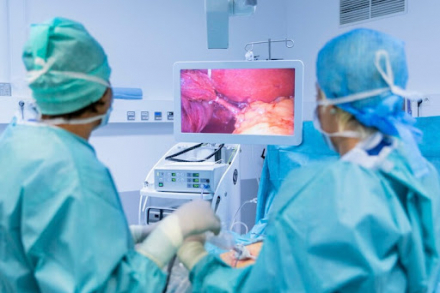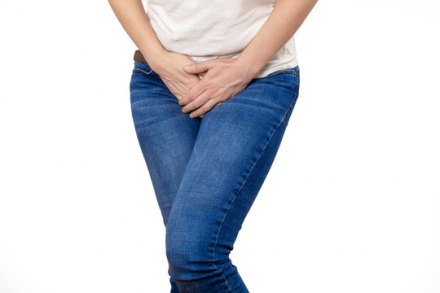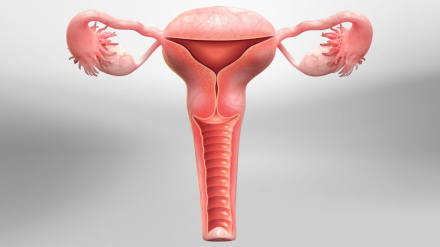







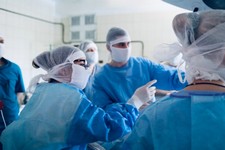
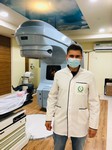
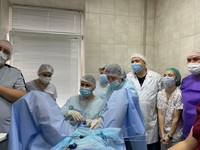
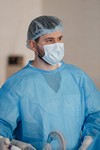
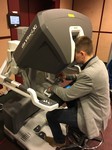



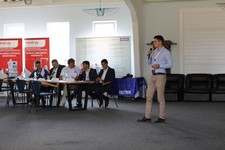

Laparoscopic conservative myomectomy
What is a myomectomy?
A myomectomy is surgery to remove fibroids from the uterus. Uterine fibroids are benign formations that grow inside the uterus. Nearly 75% of women will have fibroids at some point in their lives, but not all fibroids will require surgical removal. Laparoscopic conservative myomectomy is a minimally invasive surgery that uses only a few small incisions in the lower abdomen.
When is it necessary to operate on a fibroid?
Fibroids can cause symptoms such as heavy or prolonged menstruation, back pain, lower abdominal pain, constipation, and frequent or difficult urination. Surgery to remove the fibroid can be an effective treatment option to eliminate these symptoms. Another indication for fibroid removal is prior to planned pregnancy, as fibroids may be a cause of infertility.
What happens during the surgery?
Before the surgery begins, you will be given anesthesia to sleep. A laparoscope—a thin tube with a camera at the end—is inserted into the abdominal cavity, usually near the navel through a small incision. Additional incisions will be made on the abdomen. Air is used in the abdominal cavity to create more space between the abdominal wall and internal organs. Then surgical instruments are used to remove the fibroid and restore the uterus.
What preparation is needed for the surgery, and what tests should be done?
A number of tests are required, including:
- Complete blood count with leukocyte formula
- Biochemical blood test
- Rh factor and blood type
- Coagulogram
- Blood glucose
- General urinalysis
- Consultation with a therapist + ECG, dentist consultation (to exclude any loose teeth)
- Chest X-ray (if the previous one was done a year ago)
- Consultation with relevant specialists if there are chronic diseases (e.g., endocrinologist for diabetes, pulmonologist for asthma, etc.)
All these tests can be done at our clinic. There are no food or fluid restrictions the day before surgery. After midnight on the evening before surgery, abstain from food and drink. Bowel preparation, such as cleansing with an enema or special medications, is not required. We will also discuss all questions about whether to stop or continue taking medications before surgery.
What is the hospital stay duration? 2-3 days
How is the postoperative period?
On the day after surgery, you need to get out of bed, light physical exercises are allowed, and you may take liquid food. The day after surgery, you may eat any food, bandaging is performed in the hospital, and in most cases, discharge home occurs. At home, you should follow physical activity restrictions (lifting up to 5 kg is allowed in the first month). You can take a shower, but do not rub the incisions. If you have mild pain, oral painkillers are sufficient. The stitches on the abdomen need to be removed 12-14 days after the surgery. Sexual activity can be resumed when you feel comfortable. Your shoulders and back may hurt due to the gas used in the abdomen during surgery. Typically, these pains subside within three days. You may have some vaginal spotting after surgery, which usually resolves within 3-4 weeks. Use pads for spotting rather than tampons.
The incisions on the abdomen will be closed with special dissolvable sutures. Dressings are applied during the entire hospital stay, and after discharge, no further dressings are needed. The stitches need to be removed 12-14 days after the procedure. You can take a shower the next day after surgery, but do not rub the incisions.
In the first week after surgery, you may feel more tired than usual. Gradually increase your activity level through short walks and light activities.
How are fibroid nodules removed?
We use special containers in which the fibroid is placed, and it is removed from the abdomen through the central trocar, which is located near the navel.
We will discuss all questions regarding the surgery and the postoperative period during our meeting at the clinic.
You can view these and other surgeries on my YouTube channel.



